The one known as 'Valencian hamburger', More because of its shape than its flavor, it is a dish whose origin dates back to the area of the Levantine coast of La Safor and La Marina Alta. Over the decades it has managed to cross geographical boundaries to become everything a benchmark of the collective imagination of the gastronomy of the Valencian Community; and it is becoming more and more common to be able to taste in restaurants with its traditional preparation, although we also find it in other versions with ingredients that are far from the original.
Defended and enjoyed by a large part of the population, judged with suspicion by another and unknown by the rest, figatell is made with parts of the pig such as the lean meat, liver, jowls or kidneys. Spices such as parsley, black pepper, cloves or nutmeg are added to this preparation, which vary according to the preparation area. A touch of olive oil and salt, as a finishing touch to a presentation that arrives in a round shape as if it were a mini hamburger; Nothing could be further from the truth.
To understand a little more in depth this traditional proposal we have resorted to cooks, butchers, prescribers and restaurants to tell us about their relationship and experience with it. Did we find out?
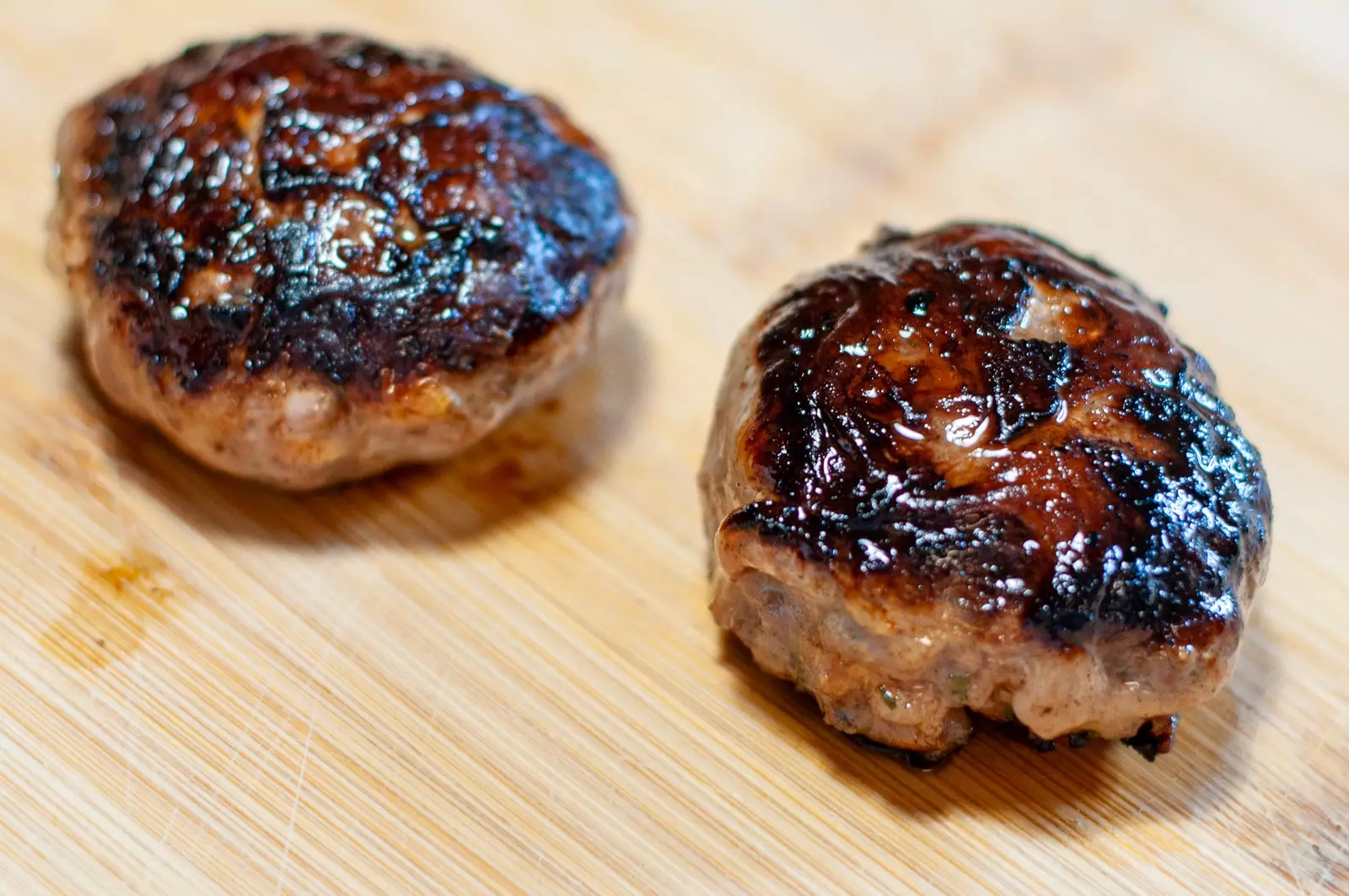
Figatells.
INTRODUCTION: ITS ELABORATION IN THE BUTCHER SHOP
Carns Fuster can boast of being one of the establishments in the entire Valencian Community where the figatells are best prepared. Open to the public since 1978 in the town of Gandía, this family business was born with the purpose of a traditional store, but with butcher sale and bakery service.
Over the decades –and after several reforms of the premises with comings and goings–, in the end they became a delicatessen-butcher shop where figatell is one of the great preparations in the form of a house seal.
"Although there are many people who define it under the name of Valencian hamburger, We are facing a product of much more ancient origin, whose elaboration is based on a completely different criterion”, the people in charge of Carns Fuster sentence to Condé Nast Traveler Spain.
“This is a product with a personality and organoleptic characteristics that surprise locals and strangers. We would dare to say that it is the recipe with the longest history that we have in the Valencian Community and the time has come for both the union and public institutions to promote it as such”, they add.
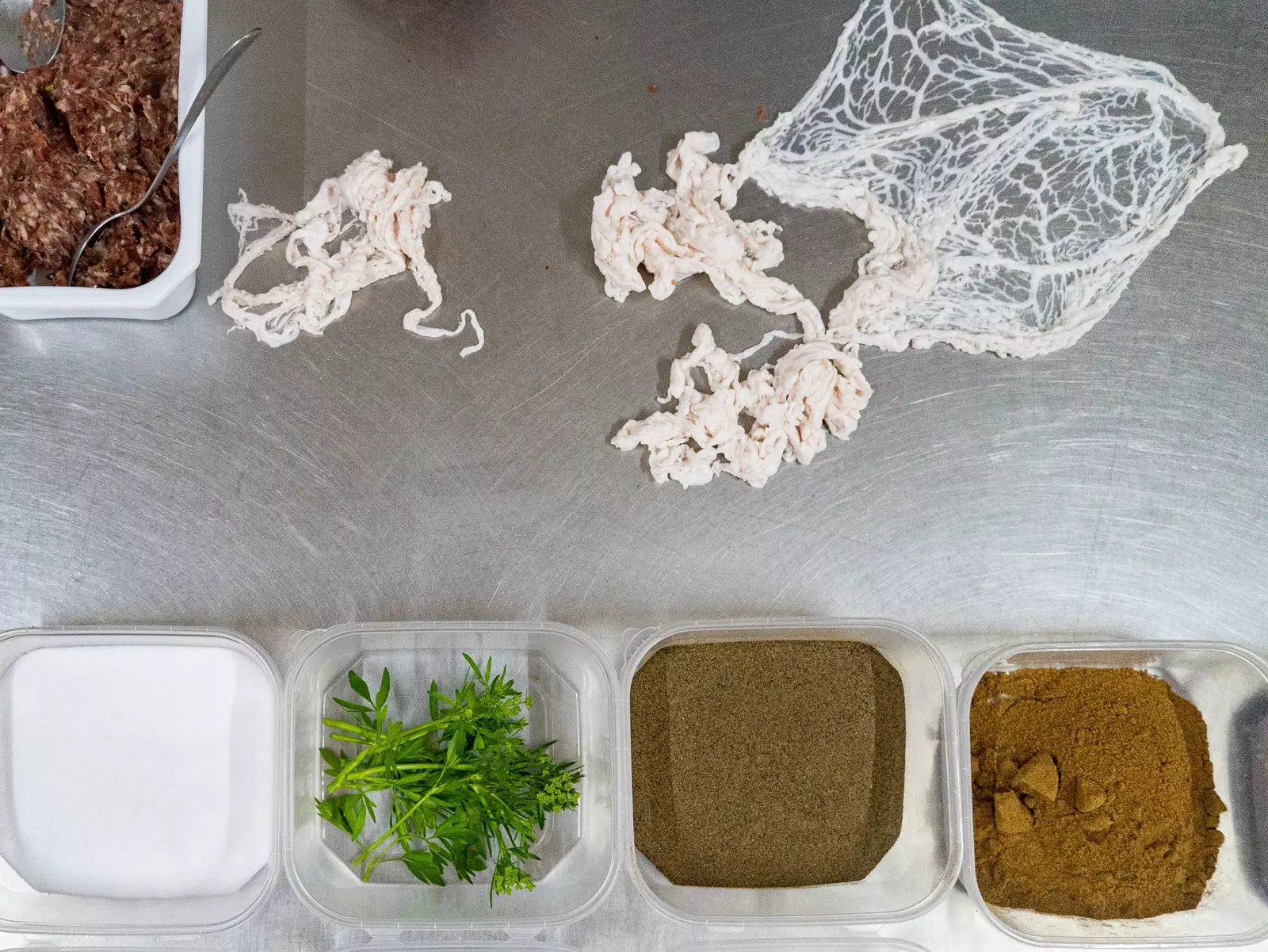
Figatell ingredients at Salvador Moll Butcher shop.
The first thing that draws the attention of future diners is the white cloth that wraps the figatell still uncooked. Known in the area as mantellina, this fat cloth is what holds the entire preparation and, like a sack, wrap the product resulting in this star product.
The secret of a good figatell? In the words of those responsible for Carns Fuster: "We find it in the raw material, which has to be of a certain quality with some meats (lean, jowls and liver) always very fresh and of course give a lot of importance to freshly ground spices (cloves, black pepper, nutmeg...), which are essential for the best possible result. Of course you have to roast, never fry. In this way the piece is taken and flattened with both hands. And that's it!” they admit.
But the traditional recipe is not the only one that we will see in this butcher shop. Its owner, José Fuster, acknowledges that the evolution of figatell is in constant motion. Why not a foie, truffle or mustard and pebrella figatell? Said and done. Options as different as these occur at the counter of your butcher shop from season to season among the rest of the proposals, always with the traditional figatell sourdough. A real delight!
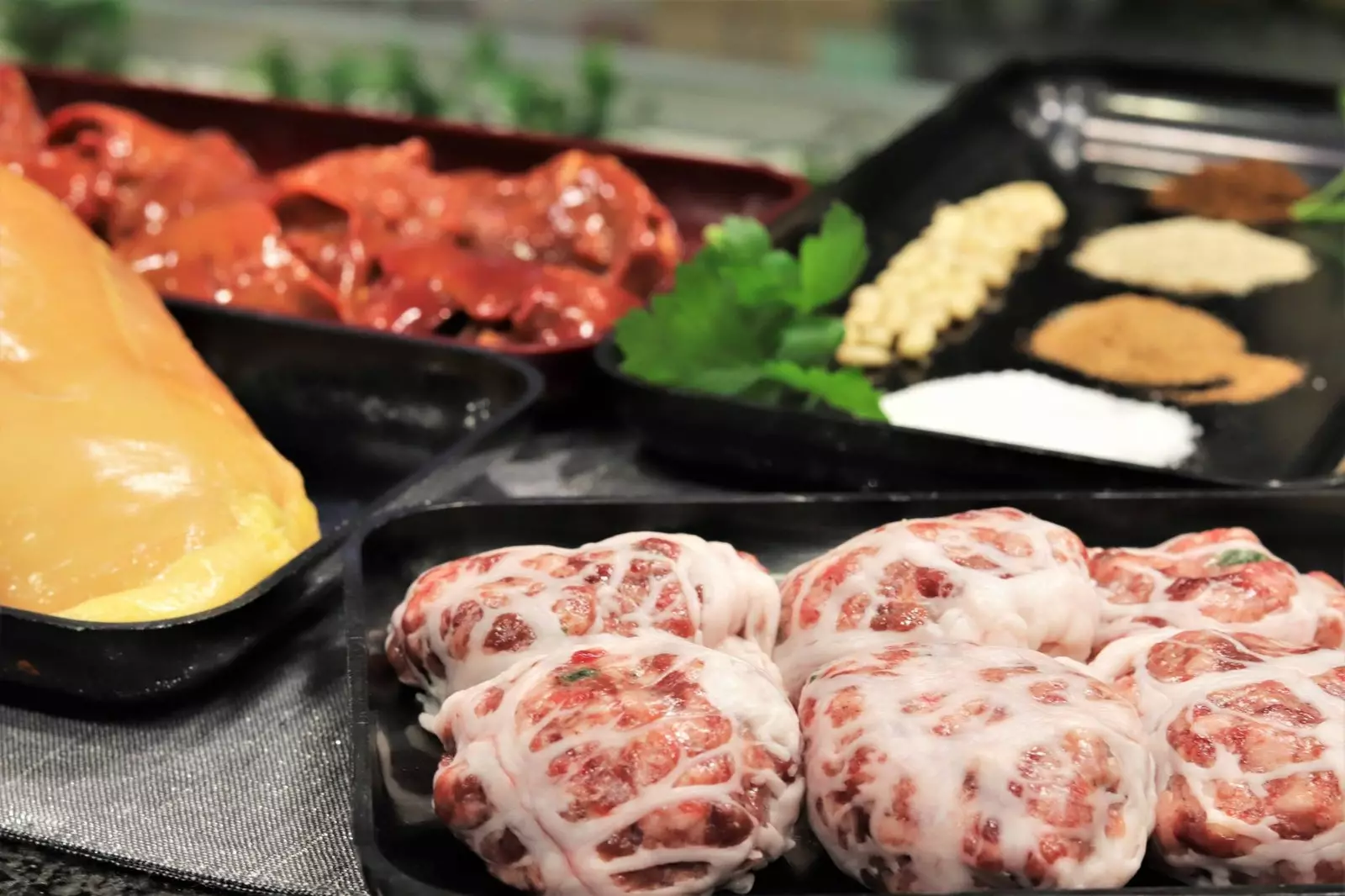
Final result before being cooked.
DEVELOPMENT: THE DISH THAT IS NOT MISSING IN THE LOCAL MENUS
From the butcher shop to the restaurant, figatell has made more and more adepts of all ages become firm followers of this recipe in recent years. The chef Ricard Camarena –with two Michelin stars, a Michelin Green Star for its sustainable gastronomy and three Repsol suns behind him–, Despite not being a saint of his devotion to the name of figatell and all that this entails, he recognizes that he couldn't have a place called BAR X and dispense with this proposal in the letter from him.
Inaugurated at the end of last November 2021 in the lower part of the Colón Market in Valencia, we are facing a casual, versatile and free of ties project where the renowned chef pay homage to his past self, the one that began its business adventure with the opening of a first little bar in the pool of Barx (region of La Safor), the town that saw it born in 1974. The rest is already in the gastronomy books.
“It's the only dish available in the restaurant that I don't eat, but I couldn't have a restaurant called this way and not have this proposal on the menu. BAR X figatells are presented with caramelized onions and mustard sauce. They bring them every week from my own town and they are prepared by Clemente, who is one of the town's butchers and They are very genuine." he comments he.
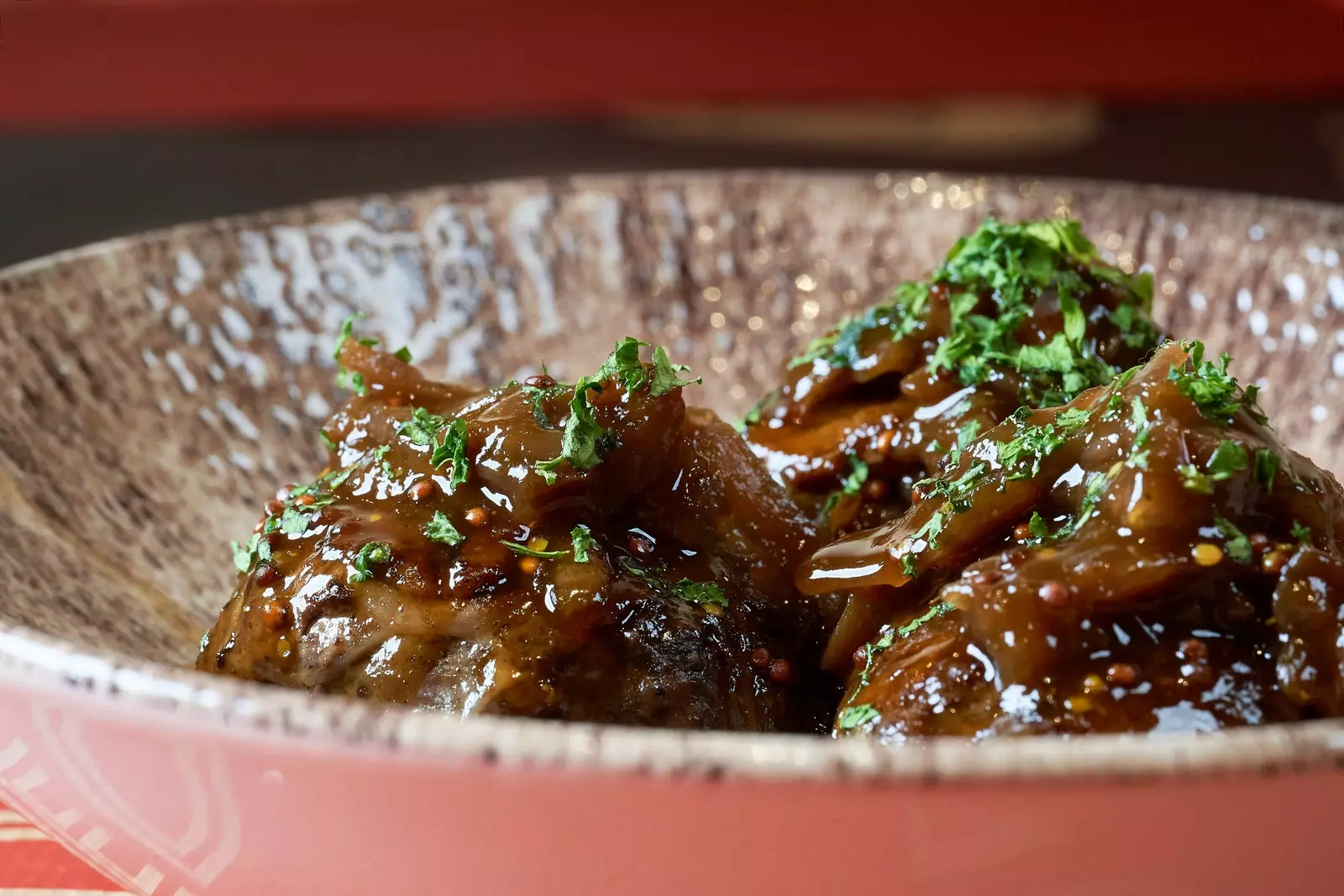
With caramelized onion and mustard sauce.
And for those people that the less noble parts of the pig are not theirs? Do not panic! In other places distributed from north to south of Levante, they have made different versions of this recipe incorporating more accepted ingredients within the Mediterranean diet. An example of this are the cuttlefish figatells that we find in establishments such as Ultramarinos Huerta (Carrer del Mestre Gozalbo, 13, Valencia).
“In our business we try complement our original proposal with what we call 'tributes', that are translated into dishes and/or techniques that have marked us throughout our personal or professional career. This is our tribute to the cuttlefish figatell of Baret de Miquel in Denia, just as we pay homage to the Bomba de la Barceloneta de la Cova Fumada by substituting the minced meat for the Requena blanquet”, he acknowledges Oscar Casasnovas , owner of Ultramarinos Huerta along with his wife Pepa Gil.
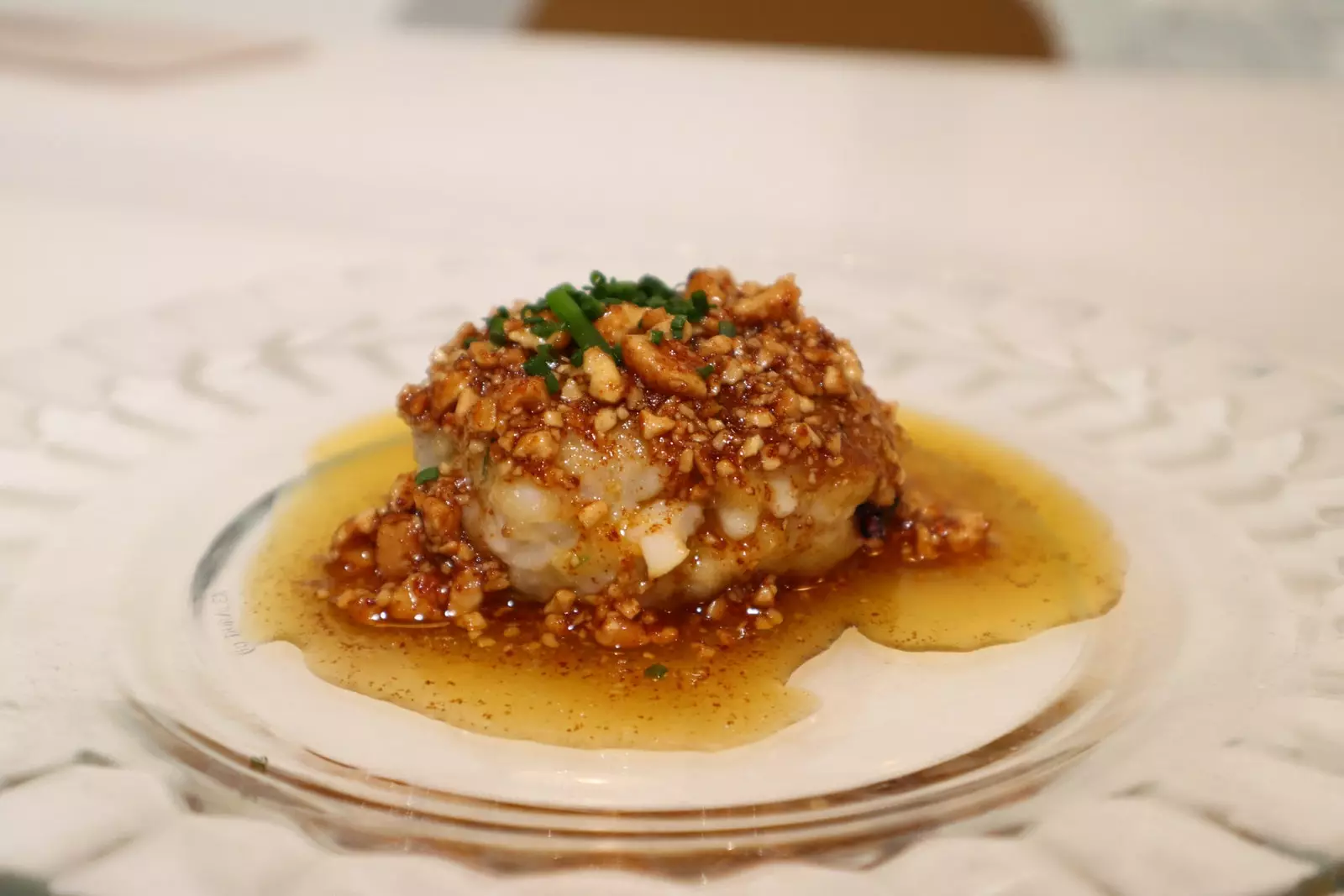
Cuttlefish figatell.
OUTCOME: TASTED BY GASTRONOMIC FOLLOWERS AND PRESCRIBERS
The last part of these lines are dedicated to the final consumer. And in this case he could not be represented more accurately than in the hand of Joan Ruiz who, under the alias of the Instagram profile Esmorzaret (more than 21,000 followers at the time these lines are written), has been making his life happy since 2018 with his feed full of gastronomic recommendations around lunch, the mid-morning break so sacred for Valencians.
In the words of Joan Ruiz: “I must admit that for me figatell at a culinary level I would say that it is a product that is halfway between the offal and a ball of stew, since it shares ingredients with the traditional meat balls with spices and herbs but, in addition, incorporates liver and a wrapper made with the mantilla of the pig. Each one of these elements gives it a very characteristic and singular touch, the mantilla gives it the fat and creaminess, spices enhance and adorn the flavors of meat and liver, mixed with the basic textures and flavors,” he acknowledges.
But the thing does not stop there, but goes further: "At a cultural level, figatell is a discovery of tradition, of charcuterie crafts, a hallmark of counties, towns and families where They are made in an artisanal way, giving them a special touch and sometimes secret. From my point of view, the figatell contains much more than a simple charcuterie product, rather it encompasses tradition, identity and the illusion of defending and preserving a unique and special product”, he adds.
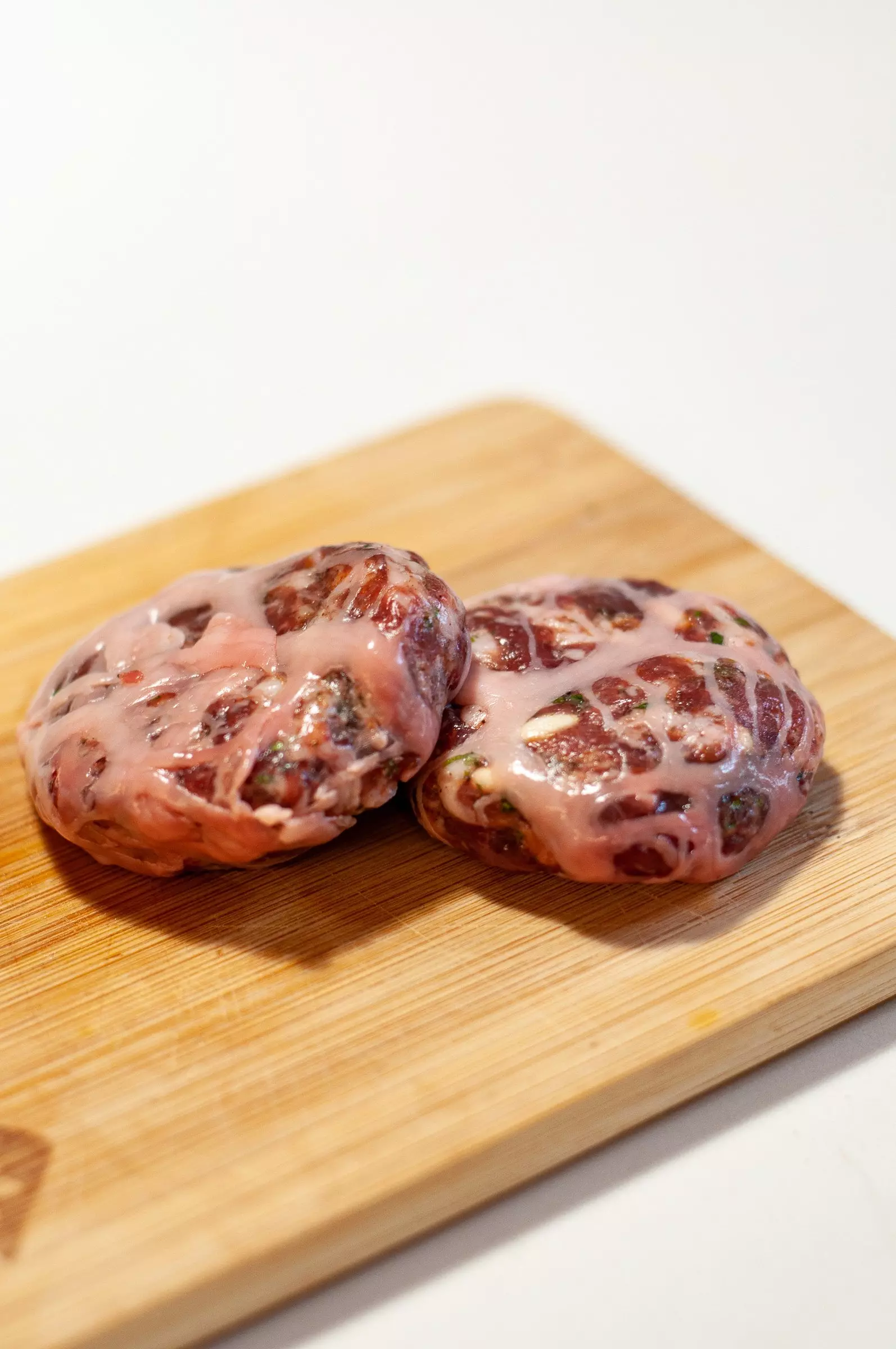
Final result before being cooked.
And this is what this gastronomic prescriber has proposed in recent months, to make a small route through the bars that translates into authentic figatell temples. Because… figatell for lunch? Of course! “100% agree, I think it is the perfect time to taste this product and any dish that breathes essence and gastronomic tradition. The good thing about lunch is that there is always room for an extra tapa or a guilty pleasure”, recognizes the king of esmorzaret.
At the moment, the best that he has tried to date –although he still has a road ahead of him– are those of the Viciano Bar, Denia Market (Served in a sandwich with aubergine, roasted pepper and a special tomato and peanut sauce. Here their figatells are without liver and crushed like a smashed burger); Alenar Mediterranean Winery, Valencia Center (in this case they are served round, split in half in a sandwich with baby broad beans and garlic mayonnaise); and in the Martinot restaurant, La Punta, Valencia (where they are served in a sandwich, whole, with caramelized onion and mustard). "I'm sure there are more places where they cook or prepare them wonderfully but, to date and of those that I have tried, I keep these references, ”he admits.
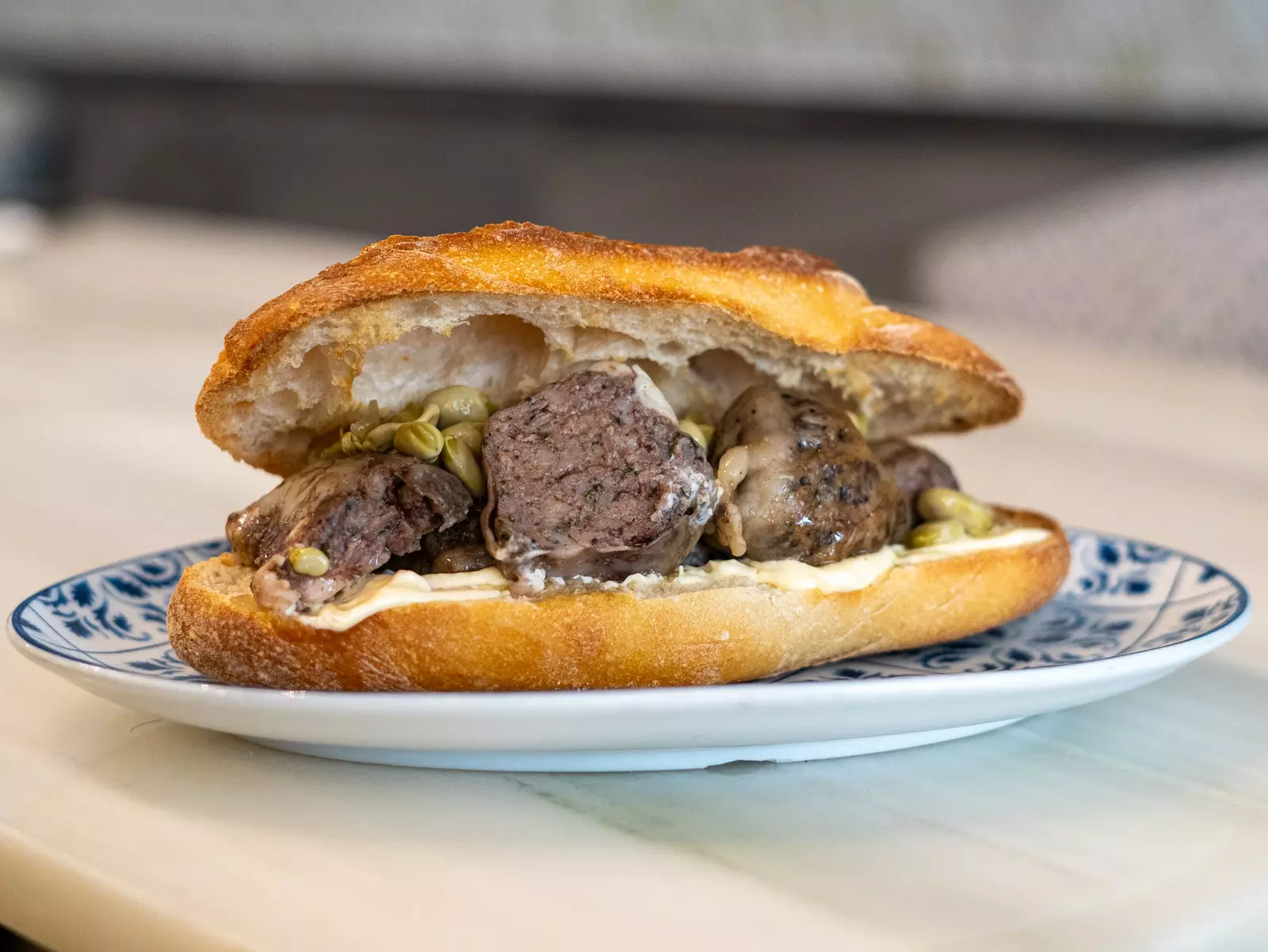
Served in a sandwich at Alenar Bodega Mediterránea.
And because shouldn't you overlook this little snack called figatell? It is Joan Ruiz who responds: “I think no one should miss it because at a time when we are so globalized and influenced by so much international gastronomic wealth it is very easy to lose sight of the wonders and possibilities that local gastronomy offers”, he recognizes him.
You know, the next time you're passing through the Community, don't hesitate to ask in the menu if they have this delicacy that speaks of tradition, history and Valencian roots. Leave prejudices aside and do not hesitate to give such a delicacy a chance!
